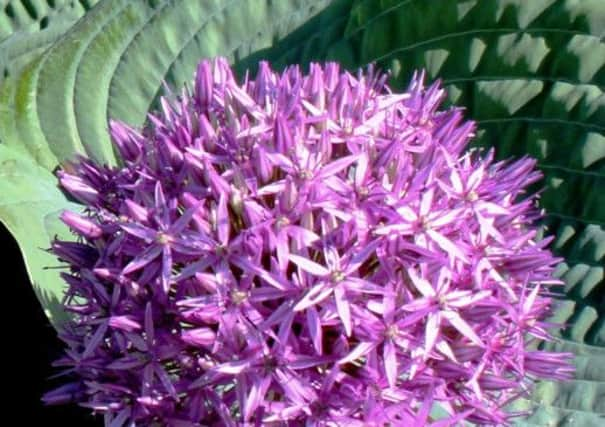Summer dreams


Cheer yourself up – it’s still several hundred days to next Christmas – but it’s still possible to look ahead. Get online or use a specialist catalogue and order a bag of summer-flowering bulbs so you get them in good time for planting in spring.
You can wait until later in the year and then buy them from garden centres, but getting them from a specialist gives you far more choice.
Advertisement
Hide AdAdvertisement
Hide AdLilies are still among the most popular of all the summer-flowerers, but there are many, many more equally stunningly lovely bulbs on offer.
Go for giant ornamental onions like Allium aflatunense, giganteum or elatum; lovely, languid irises; fascinating foxtail lilies such as Eremurus himalaicus or robustus, and crinums with their gigantic pink trumpet flowers.
And while you’re waiting for the postman to deliver the goods, prepare for the appearance of spring bulbs.
Snowdrops are already flowering and some gardeners have been enjoying the sight of very early daffodils since the end of the old year, but there are many more bulbs yet to bloom.
Advertisement
Hide AdAdvertisement
Hide AdBulbs fall generally into two groups: Spring-flowering (planted in the autumn) and summer-flowering (planted in the spring).
A more accurate grouping, however, divides bulbs into hardy and tender varieties. As a rule, spring-flowering bulbs are hardy bulbs. These bulbs are planted in the autumn, generally before the first frost, and can usually survive the cold winter months.
Many hardy bulbs, such as daffodils, can be left in the ground to flower year after year.
Most summer-flowering bulbs are tender bulbs which cannot survive harsh winter conditions and are planted in spring. They need protection until the threat of frost has vanished.
Advertisement
Hide AdAdvertisement
Hide AdTo enjoy these bulbs year after year, they should be dug up in autumn and stored indoors over the winter.
A notable exception is the lily. Many summer-flowering lily varieties are quite hardy.
Sometimes you can gamble, successfully, leaving tender bulbs in the soil over winter; if they are covered by a thick mulch and the ground doesn’t get waterlogged or frozen, they may well survive.
It’s a gamble but...
DID YOU LOOK at the garden the weekend after Christmas when, in many parts of Yorkshire, snow covered everything. It was monotone; a place of shapes, an architectural wonderland; a thing of beauty.
Advertisement
Hide AdAdvertisement
Hide AdA lot of people see winter as a time to stay indoors. To them, winter is a time to forget the outdoors.
But why? Winter can have just as much beauty and interest as the awakening, fresh spring and colours to rival that of the summer border. You have to look a little harder, appreciate a little more.
Shapes, foliage, even the desiccated seedheads of summer; all have something to offer the garden in winter.
Evergreens are always there, and used thoughtfully, they can provide the skeleton to a late autumn or winter bed or border. They can be a late autumn or winter bed or border. The dark-leaved can be used as a backcloth to highlight the light and variegated, or they can act as a windbreak to protect tender plants.
Advertisement
Hide AdAdvertisement
Hide AdAnd as for colour... the vivid yellow of winter jasmine, Jasminum nudiflorum, whose yellow blooms appear long before the plant’s leaves. Mahonia ‘Charity’ can be used to form a low holly-like hedge, but its greatest assets appear in October and continue to brighten dreary November and dark December.
Yellow, scented flowers arch outwards, paving the way for the scented Daphne mezereum, whose sweet, fragrant flowers seem to thrive in February’s bitter frosts.
For ground cover, consider winter-flowering heathers and hellebores, bulbs like Cyclamen coum, snowdrops, winter aconites, dwarf daffodils and the white wood anemones.
Plant variegated, low-growing shrubs like Euonymus fortunei ‘Emerald Gaiety’; grow vivid-barked dogwoods like Cornus stolonifera ‘Flaviramea’ with its lustrous yellow bark, and C alba ‘Elegantissima’ with its flaming red; use berried shrubs like cotoneasters and pyracanthas.
Don’t be fooled into believing that winter is a time when the garden sleeps; it dozes, it snoozes, but it never sleeps.